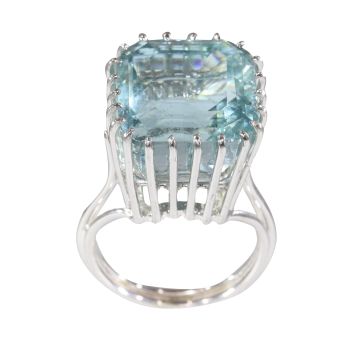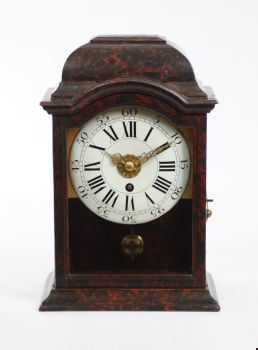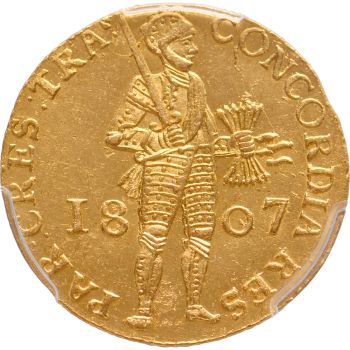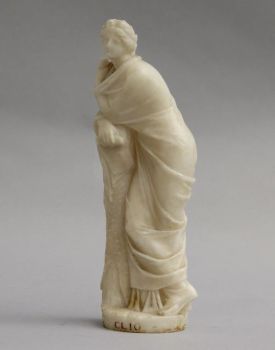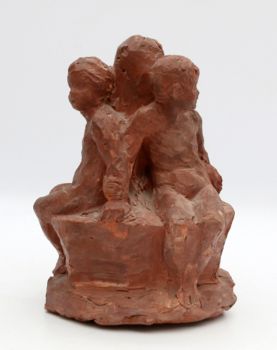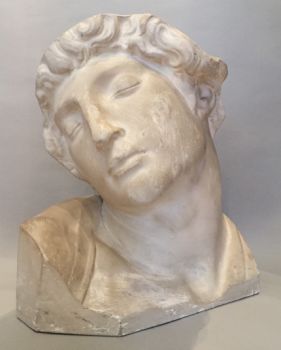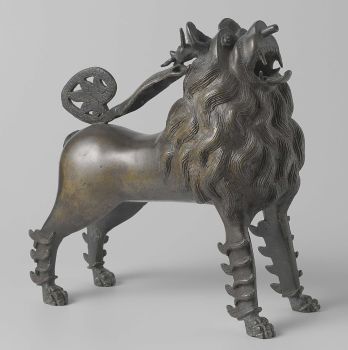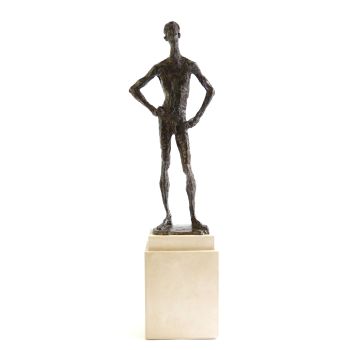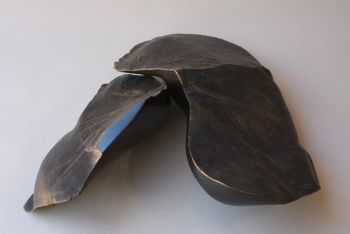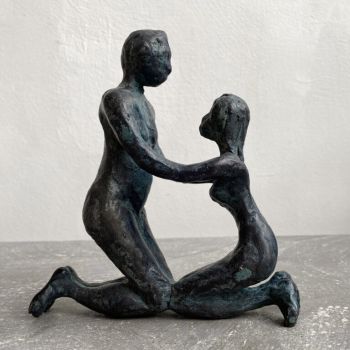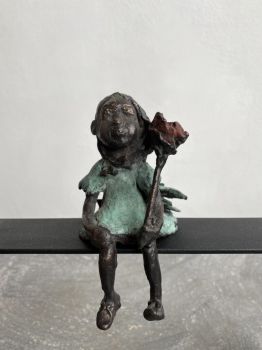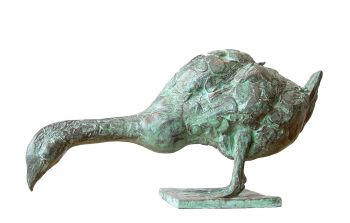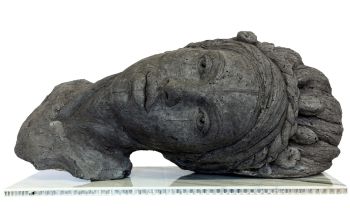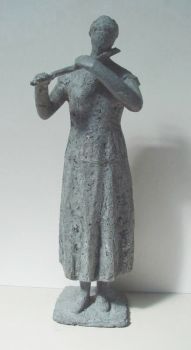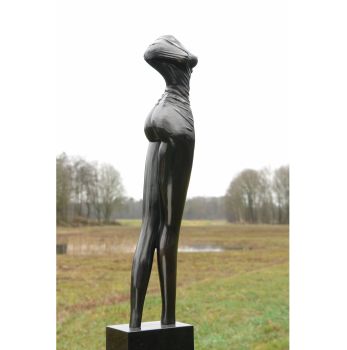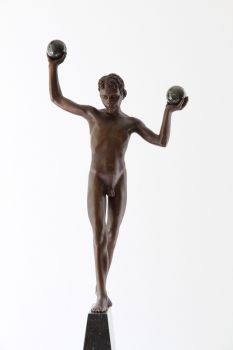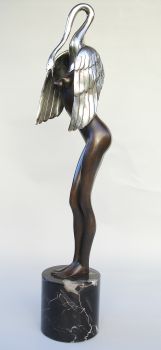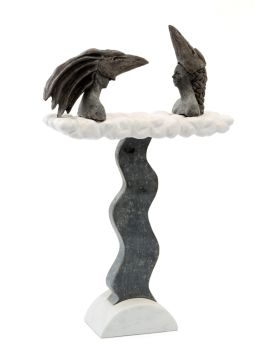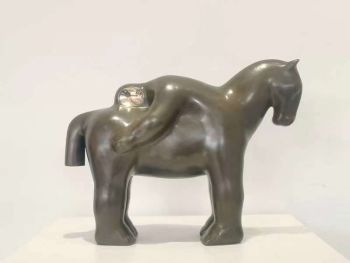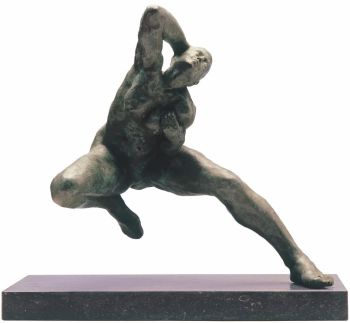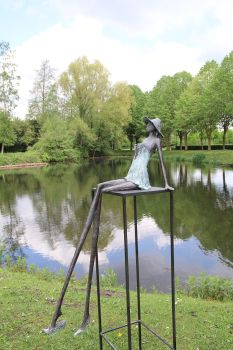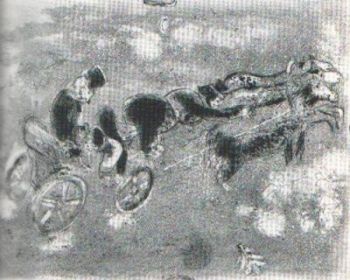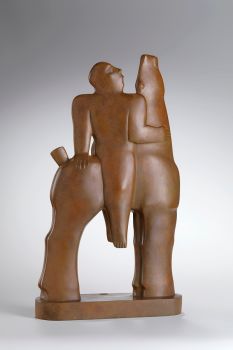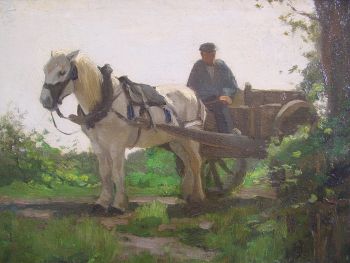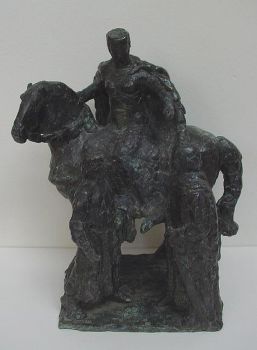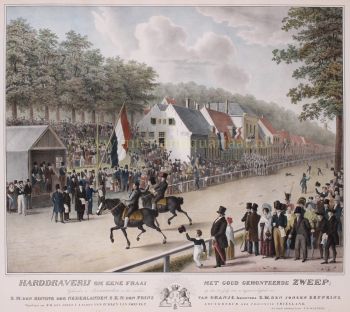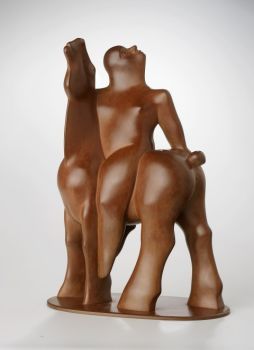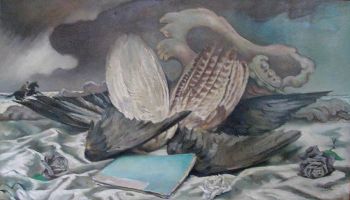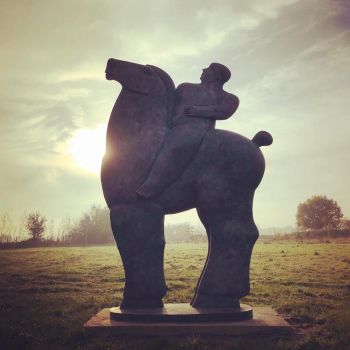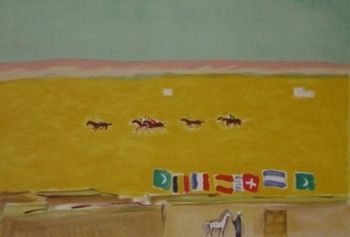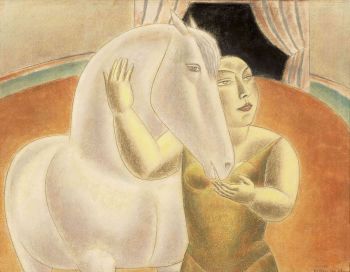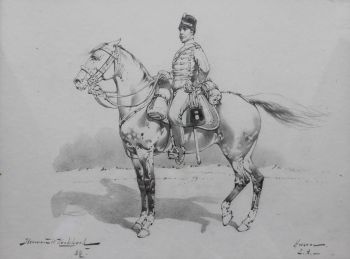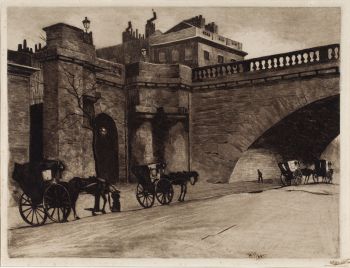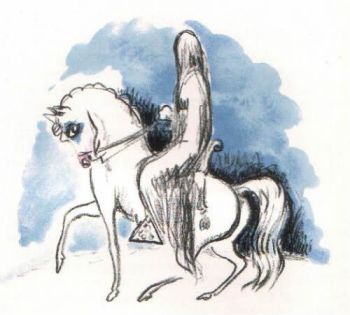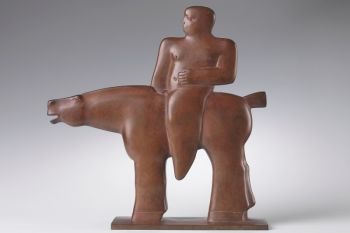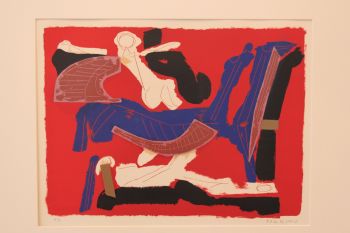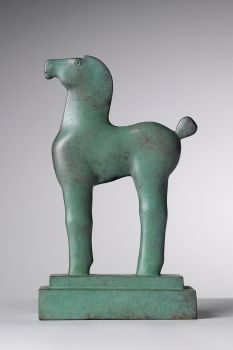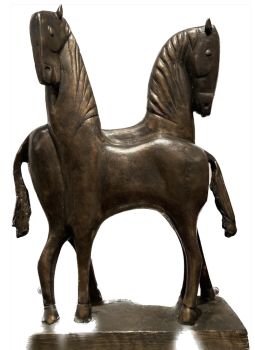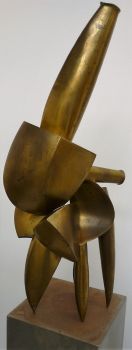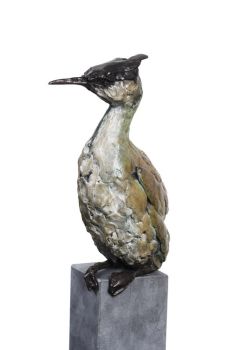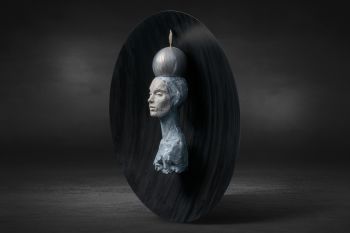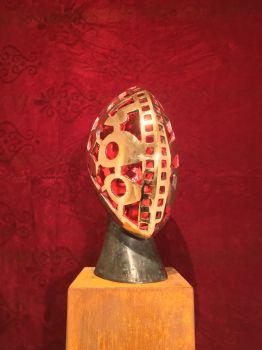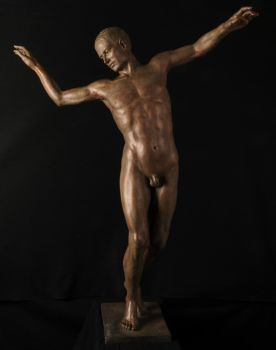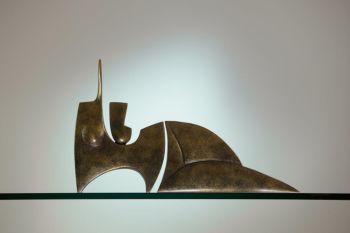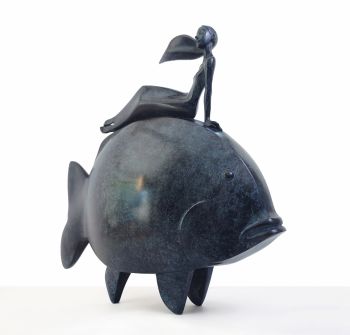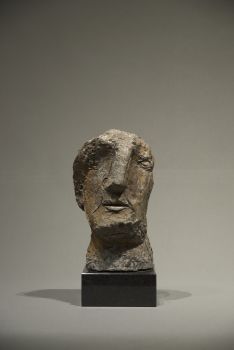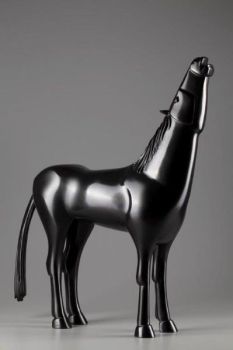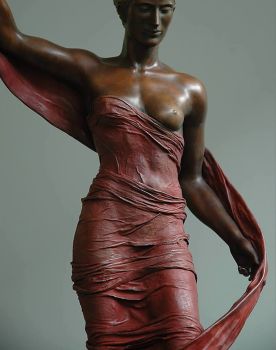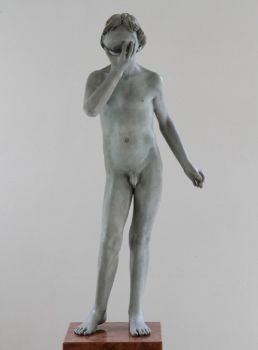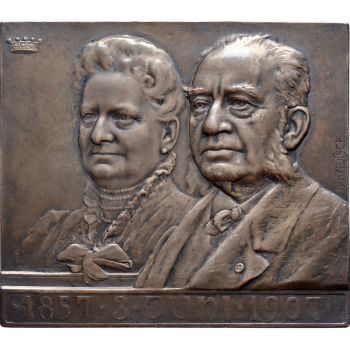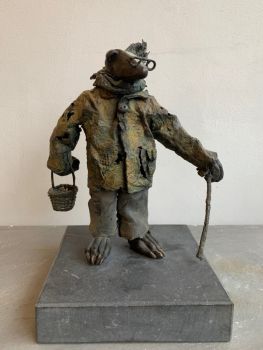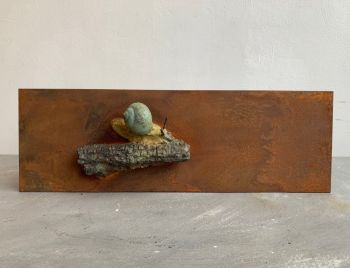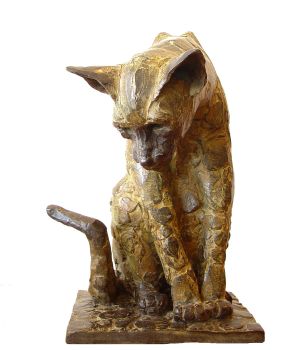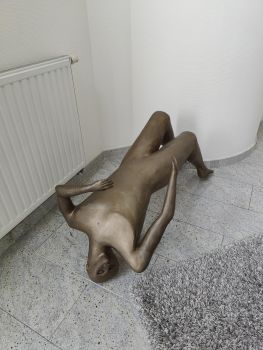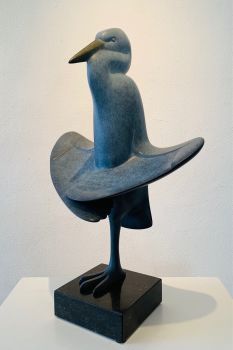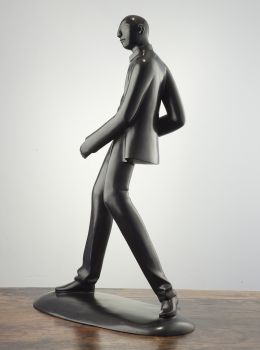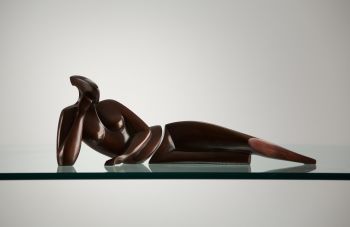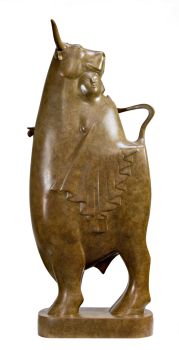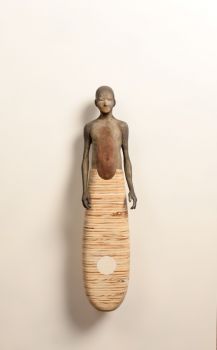Estátua equestre de Luís XIV, em homenagem a Martin van den Bogaert, conhecido como Desjardins 1729 - 1731
Artista Desconhecido
BronzeMetal
43 ⨯ 38 cm
Atualmente indisponível via Gallerease
- Sobre arteThe image of the mounted sovereign dates back from antiquity, with Marcus Aurelius as prime example. It was seen as the most dignified and superior representation of power. Once Louis XIV had reached the pinnacle of his glory in 1685, a program was set up to spread the image of this power to every nook and cranny of the French realm. A great number of monuments were erected as proof of honour and loyalty to Louis le Grand. For this purpose ten squares, the so called ‘Places Royal’, were created to accommodate the huge equestrian statues. In 1688 such a statue was commissioned to Martin van den Bogaert for the Place Bellecour in Lyon.
Just like the immense equestrian statues from the hand of François Girardon and others,in Paris, Aix en Provence and other cities, this statue did not survive the French revolution.
Martin van den Bogaert was born in Breda in 1637 and was trained as a painter in Antwerp. Soon he moved to Paris where he gallicized his name and became a sculptor. He died in Paris in 1694, but his fame stretched way passed his demise, because of the demand for the smaller version of statue throughout Europe. The model was also modified (another head) to be issued as le Grand Dauphin and Maximilian II of Bavaria.
The importance of the equestrian statue of Louis XIV was thought to be so enormous, that Diderot used it in his Encyclopédie to clarify the art of bronze casting. This statue after Desjardin is part of the most important collections in the world, like the collection of the Queen of England, the Wallace collection in London, the Metropolitan Museum in New York and the Louvre.
This statue of Louis XIV after Martin Desjardins is cast around 1730. - Sobre artista
Pode acontecer que um artista ou criador seja desconhecido.
Algumas obras não devem ser determinadas por quem são feitas ou são feitas por (um grupo de) artesãos. Exemplos são estátuas dos tempos antigos, móveis, espelhos ou assinaturas que não são claras ou legíveis, mas também algumas obras não são assinadas.
Além disso, você pode encontrar a seguinte descrição:
•"Atribuído a …." Na opinião deles, provavelmente uma obra do artista, pelo menos em parte
• “Estúdio de…” ou “Oficina de” Em sua opinião um trabalho executado no estúdio ou oficina do artista, possivelmente sob sua supervisão
• "Círculo de ..." Na opinião deles, uma obra da época do artista mostrando sua influência, intimamente associada ao artista, mas não necessariamente seu aluno
•“Estilo de…” ou “Seguidor de…” Na opinião deles, um trabalho executado no estilo do artista, mas não necessariamente por um aluno; pode ser contemporâneo ou quase contemporâneo
• "Maneira de ..." Na opinião deles, uma obra no estilo do artista, mas de data posterior
•"Depois …." Na opinião deles uma cópia (de qualquer data) de uma obra do artista
• “Assinado…”, “Datado…” ou “Inscrito” Na opinião deles, a obra foi assinada/datada/inscrita pelo artista. A adição de um ponto de interrogação indica um elemento de dúvida
• "Com assinatura ….”, “Com data ….”, “Com inscrição ….” ou “Tem assinatura/data/inscrição” na opinião deles a assinatura/data/inscrição foi adicionada por outra pessoa que não o artista
Artwork details
Related artworks
Artista Desconhecido
Holandeses em miniatura (Netsuke)1700 - 1900
Preço em pedidoZebregs & Röell - Fine Art - Antiques
1 - 4 / 12Artista Desconhecido
A pair of angels Antwerp, 17th century, Carrara marble17th century
Preço em pedidoFrederik Muller
Johannes van Dreght
Antique Dutch still life flowers in vase1740 - 1800
Preço em pedidoGallerease Selected
 Com curadoria de
Com curadoria deDanny Bree
Artista Desconhecido
A Surinam-themed Amsterdam long-case clock1746 - 1756
Preço em pedidoZebregs & Röell - Fine Art - Antiques
 Com curadoria de
Com curadoria deGallerease Magazine
 Com curadoria de
Com curadoria deDanny Bree
1 - 4 / 24- 1 - 4 / 24
Willem Witsen
Waiting carriages in front of Waterloo Bridge1850 - 1900
Preço em pedidoKunsthandel Pygmalion
1 - 4 / 24- 1 - 4 / 24


